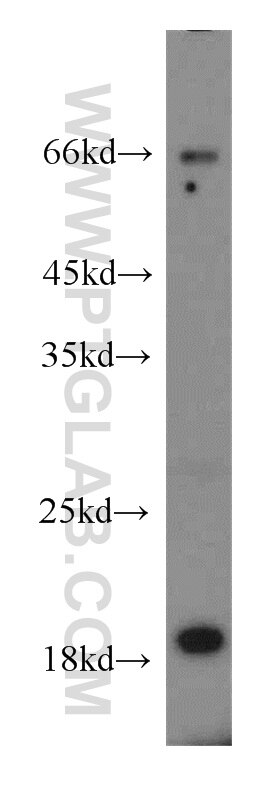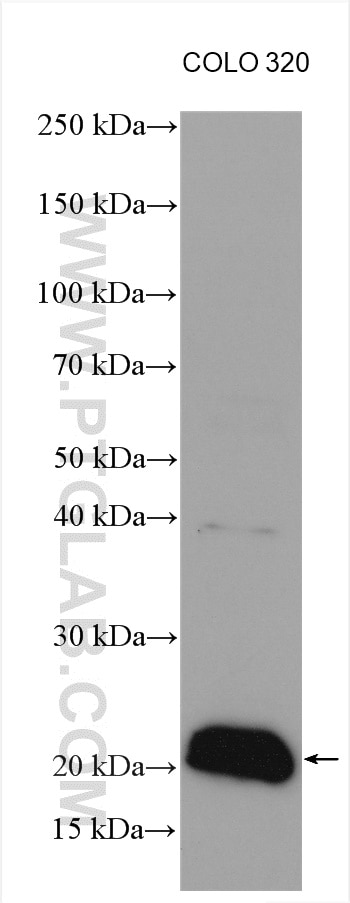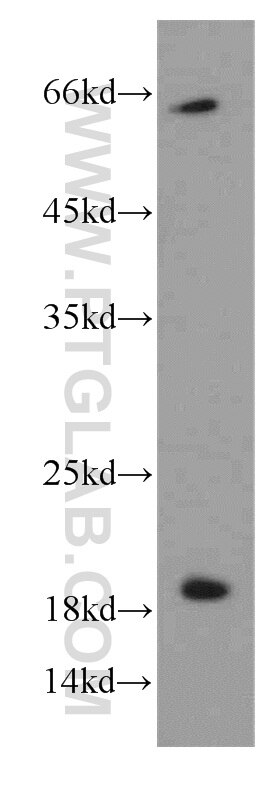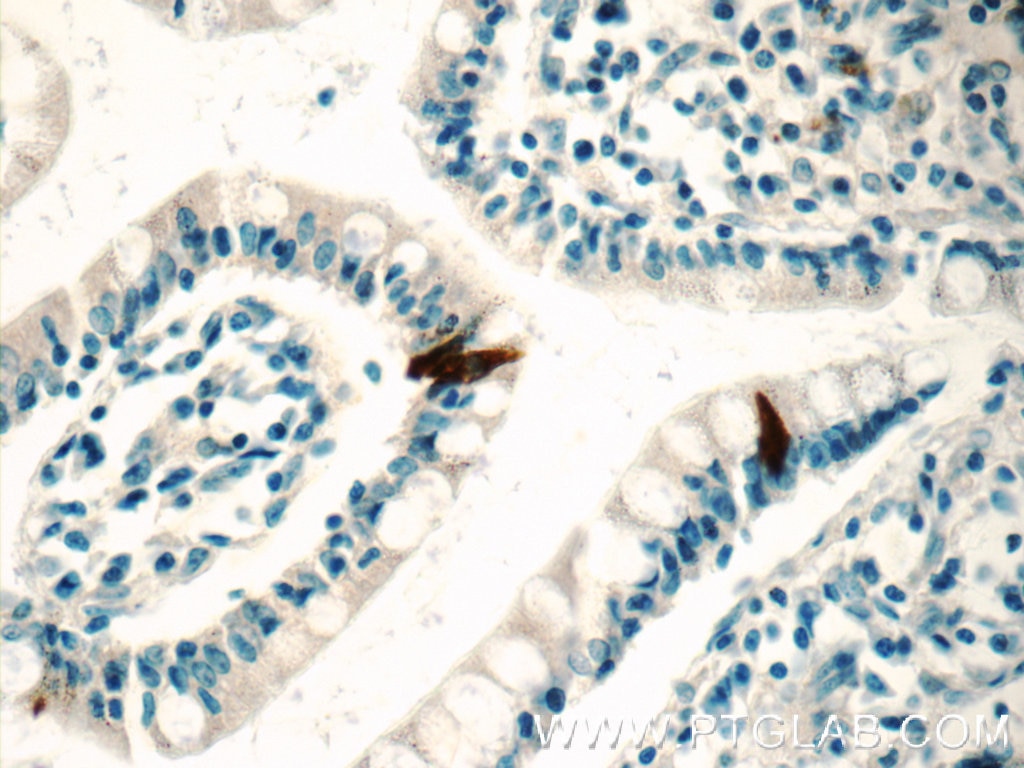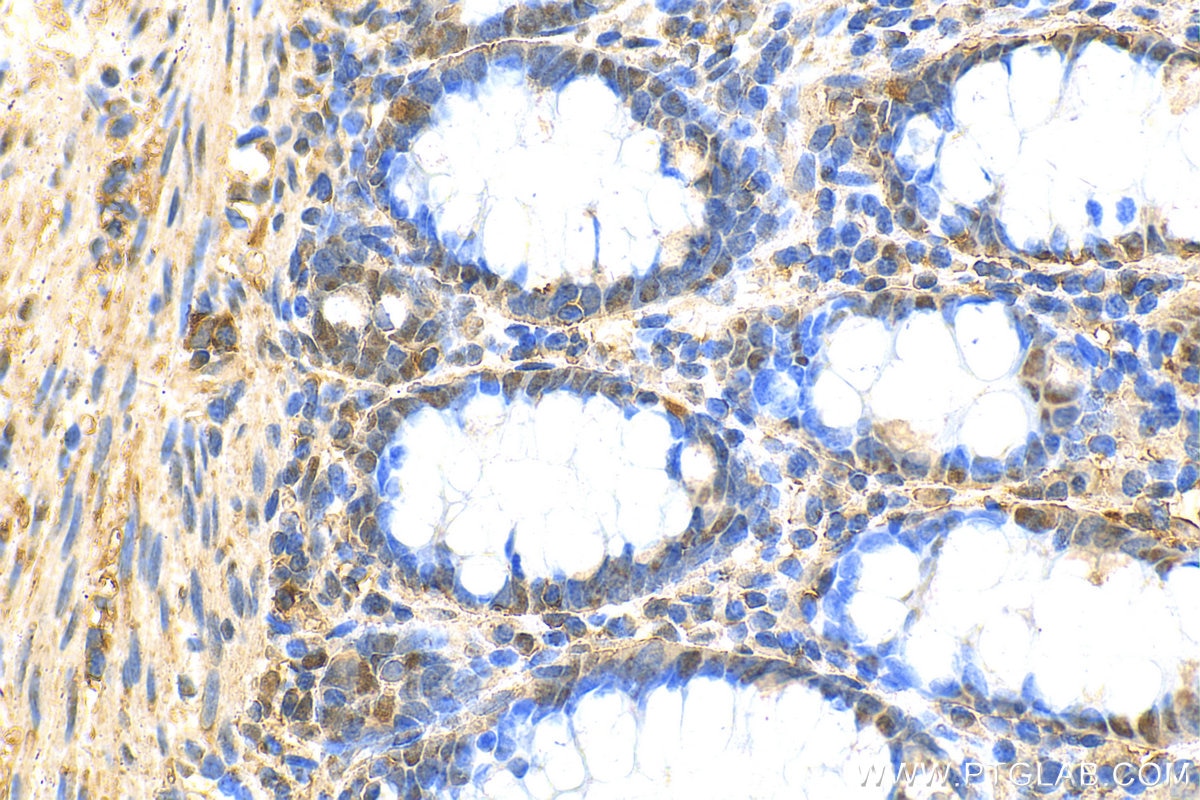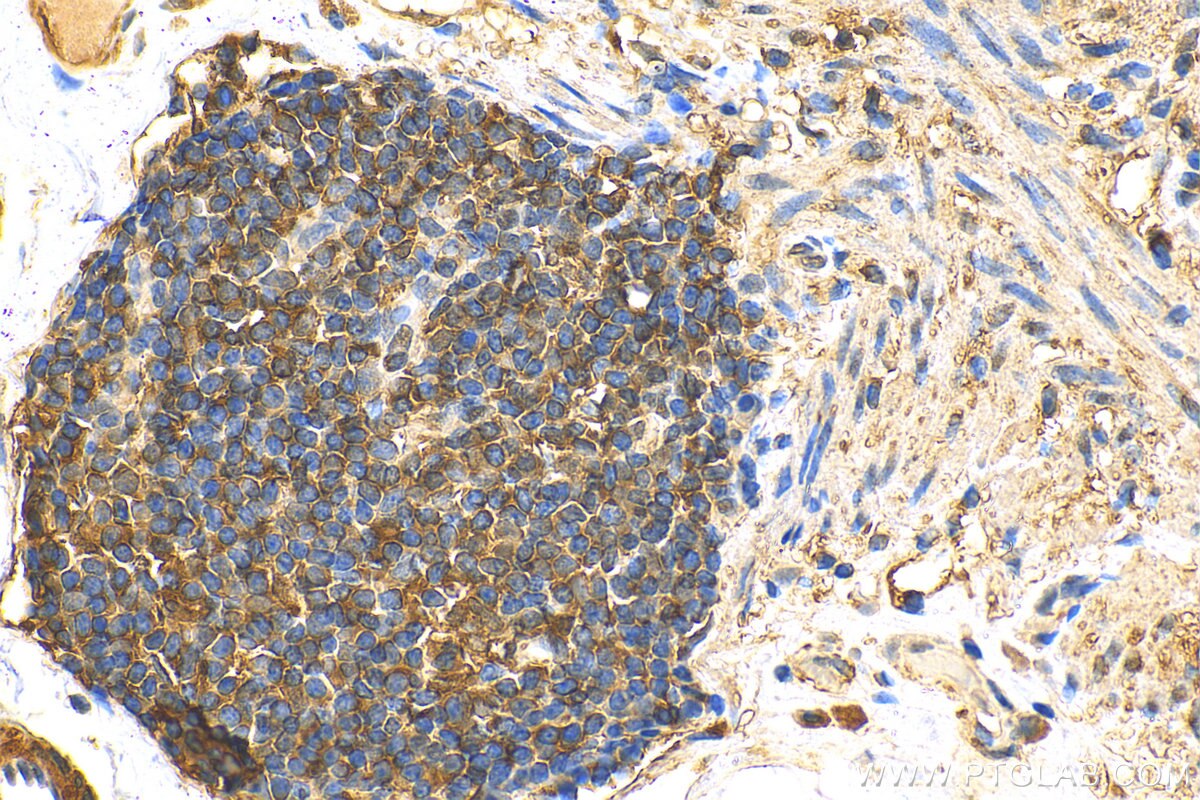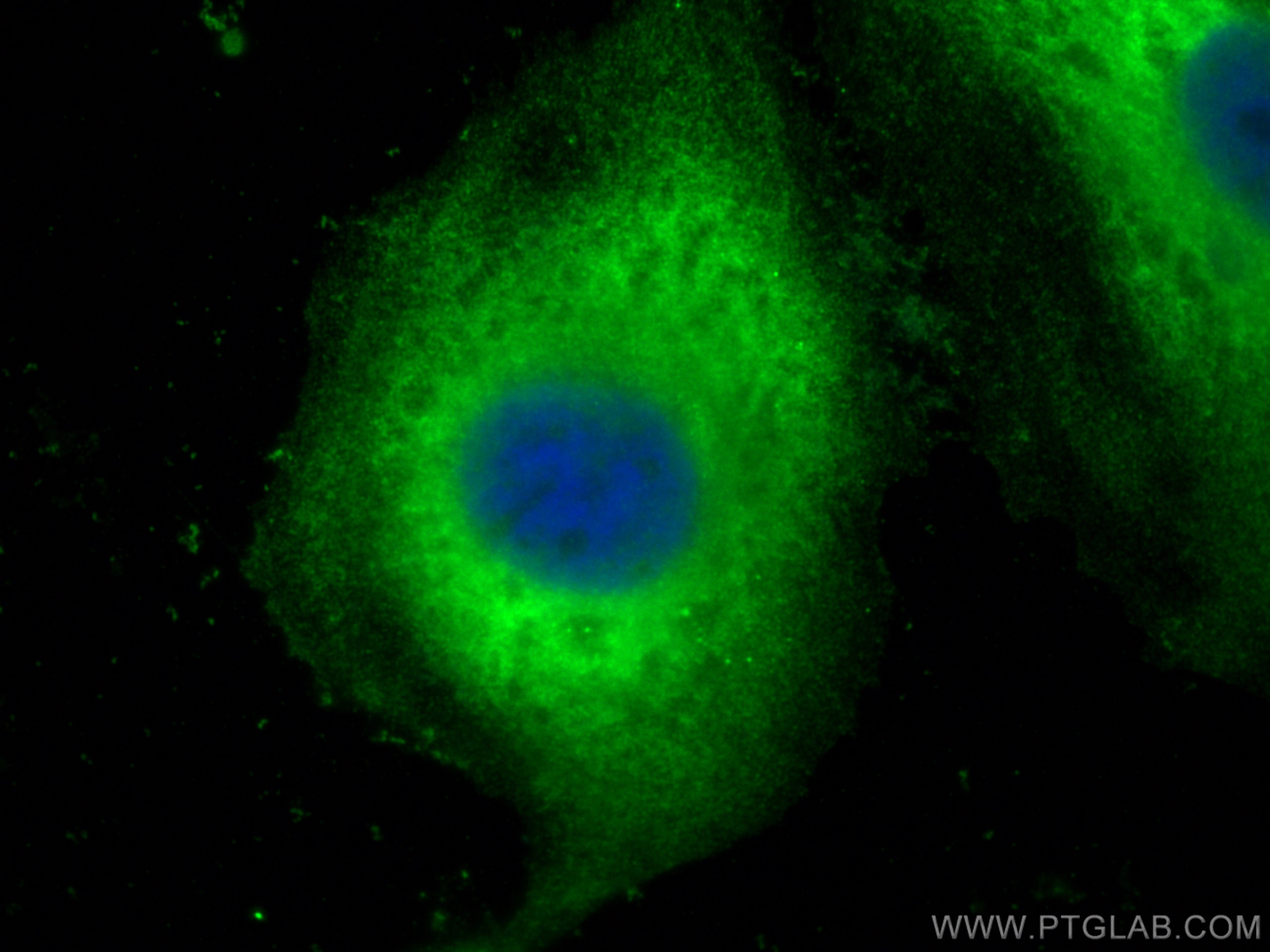Anticorps Polyclonal de lapin anti-ENSA
ENSA Polyclonal Antibody for WB, IHC, IF/ICC, ELISA
Hôte / Isotype
Lapin / IgG
Réactivité testée
Humain, souris
Applications
WB, IHC, IF/ICC, ELISA
Conjugaison
Non conjugué
N° de cat : 14518-1-AP
Synonymes
Galerie de données de validation
Applications testées
| Résultats positifs en WB | tissu cérébral de souris, cellules COLO 320, cellules HeLa |
| Résultats positifs en IHC | tissu d'intestin grêle humain, tissu de côlon humain il est suggéré de démasquer l'antigène avec un tampon de TE buffer pH 9.0; (*) À défaut, 'le démasquage de l'antigène peut être 'effectué avec un tampon citrate pH 6,0. |
| Résultats positifs en IF/ICC | cellules HeLa, |
Dilution recommandée
| Application | Dilution |
|---|---|
| Western Blot (WB) | WB : 1:200-1:1000 |
| Immunohistochimie (IHC) | IHC : 1:50-1:200 |
| Immunofluorescence (IF)/ICC | IF/ICC : 1:200-1:800 |
| It is recommended that this reagent should be titrated in each testing system to obtain optimal results. | |
| Sample-dependent, check data in validation data gallery | |
Informations sur le produit
14518-1-AP cible ENSA dans les applications de WB, IHC, IF/ICC, ELISA et montre une réactivité avec des échantillons Humain, souris
| Réactivité | Humain, souris |
| Hôte / Isotype | Lapin / IgG |
| Clonalité | Polyclonal |
| Type | Anticorps |
| Immunogène | ENSA Protéine recombinante Ag5982 |
| Nom complet | endosulfine alpha |
| Masse moléculaire calculée | 14 kDa |
| Poids moléculaire observé | 19 kDa |
| Numéro d’acquisition GenBank | BC004461 |
| Symbole du gène | ENSA |
| Identification du gène (NCBI) | 2029 |
| Conjugaison | Non conjugué |
| Forme | Liquide |
| Méthode de purification | Purification par affinité contre l'antigène |
| Tampon de stockage | PBS with 0.02% sodium azide and 50% glycerol |
| Conditions de stockage | Stocker à -20°C. Stable pendant un an après l'expédition. L'aliquotage n'est pas nécessaire pour le stockage à -20oC Les 20ul contiennent 0,1% de BSA. |
Informations générales
Endosulfine alpha (ENSA) belongs to the highly conserved c-AMP-regulated phosphoprotein (ARPP) family and was originally identified as an endogenous ligand for the sulfonylurea receptor, which regulates insulin secretion and glucose metabolism.ENSA not only regulates the cell cycle by interacting with microtubule-associated serine/threonine protein kinase-like (MASTL) enzymes, but also influences tumor growth through its own methylation. Recent studies have shown that ENSA is an important regulator of cholesterol biosynthesis in triple-negative breast cancer (TNBC) and that it triggers tumor growth by promoting cholesterol biosynthesis in TNBC.
Protocole
| Product Specific Protocols | |
|---|---|
| WB protocol for ENSA antibody 14518-1-AP | Download protocol |
| IHC protocol for ENSA antibody 14518-1-AP | Download protocol |
| IF protocol for ENSA antibody 14518-1-AP | Download protocol |
| Standard Protocols | |
|---|---|
| Click here to view our Standard Protocols |
